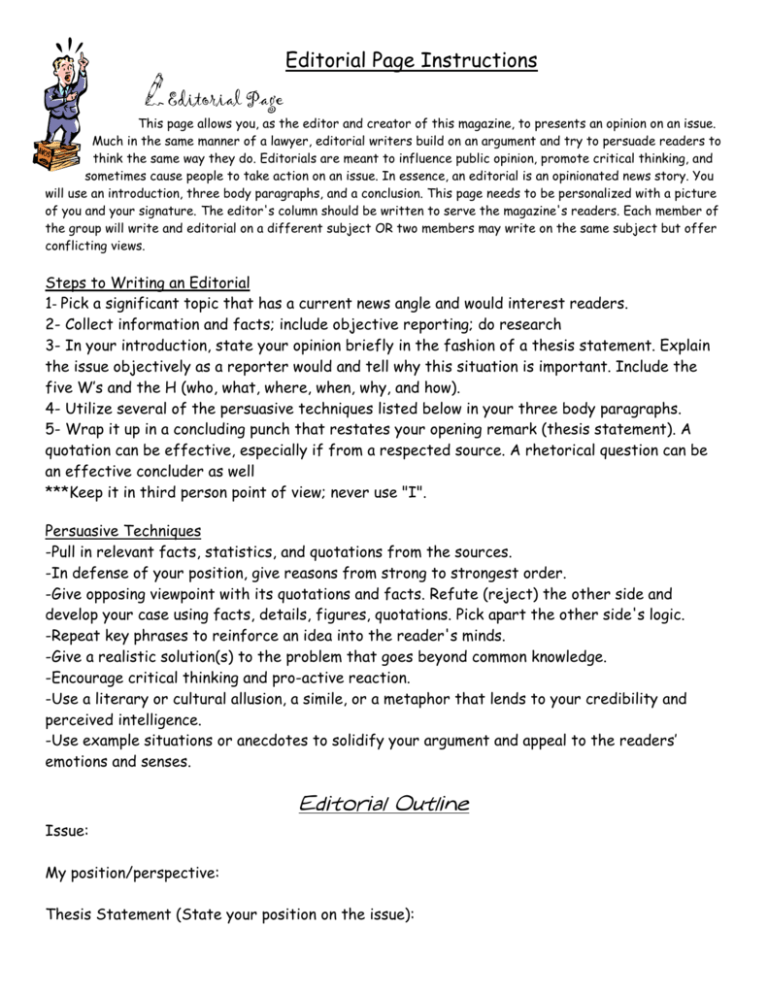Editorial Outline
advertisement

Editorial Page Instructions Editorial Page This page allows you, as the editor and creator of this magazine, to presents an opinion on an issue. Much in the same manner of a lawyer, editorial writers build on an argument and try to persuade readers to think the same way they do. Editorials are meant to influence public opinion, promote critical thinking, and sometimes cause people to take action on an issue. In essence, an editorial is an opinionated news story. You will use an introduction, three body paragraphs, and a conclusion. This page needs to be personalized with a picture of you and your signature. The editor's column should be written to serve the magazine's readers. Each member of the group will write and editorial on a different subject OR two members may write on the same subject but offer conflicting views. Steps to Writing an Editorial 1- Pick a significant topic that has a current news angle and would interest readers. 2- Collect information and facts; include objective reporting; do research 3- In your introduction, state your opinion briefly in the fashion of a thesis statement. Explain the issue objectively as a reporter would and tell why this situation is important. Include the five W’s and the H (who, what, where, when, why, and how). 4- Utilize several of the persuasive techniques listed below in your three body paragraphs. 5- Wrap it up in a concluding punch that restates your opening remark (thesis statement). A quotation can be effective, especially if from a respected source. A rhetorical question can be an effective concluder as well ***Keep it in third person point of view; never use "I". Persuasive Techniques -Pull in relevant facts, statistics, and quotations from the sources. -In defense of your position, give reasons from strong to strongest order. -Give opposing viewpoint with its quotations and facts. Refute (reject) the other side and develop your case using facts, details, figures, quotations. Pick apart the other side's logic. -Repeat key phrases to reinforce an idea into the reader's minds. -Give a realistic solution(s) to the problem that goes beyond common knowledge. -Encourage critical thinking and pro-active reaction. -Use a literary or cultural allusion, a simile, or a metaphor that lends to your credibility and perceived intelligence. -Use example situations or anecdotes to solidify your argument and appeal to the readers’ emotions and senses. Editorial Outline Issue: My position/perspective: Thesis Statement (State your position on the issue): Introduction (make sure to answer the 5Ws – Who? What? When? Where? Why?) Body Paragraph 1: (Arguments/reasoning that support my perspective[thesis statement] followed by supporting evidence/details[use quotations around material from research and cite your sources]) Topic Sentence: a. b. c. Closing Sentence: Body Paragraph 2: Topic Sentence: a. b. c. Closing Sentence: Body Paragraph 3: Topic Sentence: a. b. c. Closing Sentence: Conclusion: Restate Thesis:






